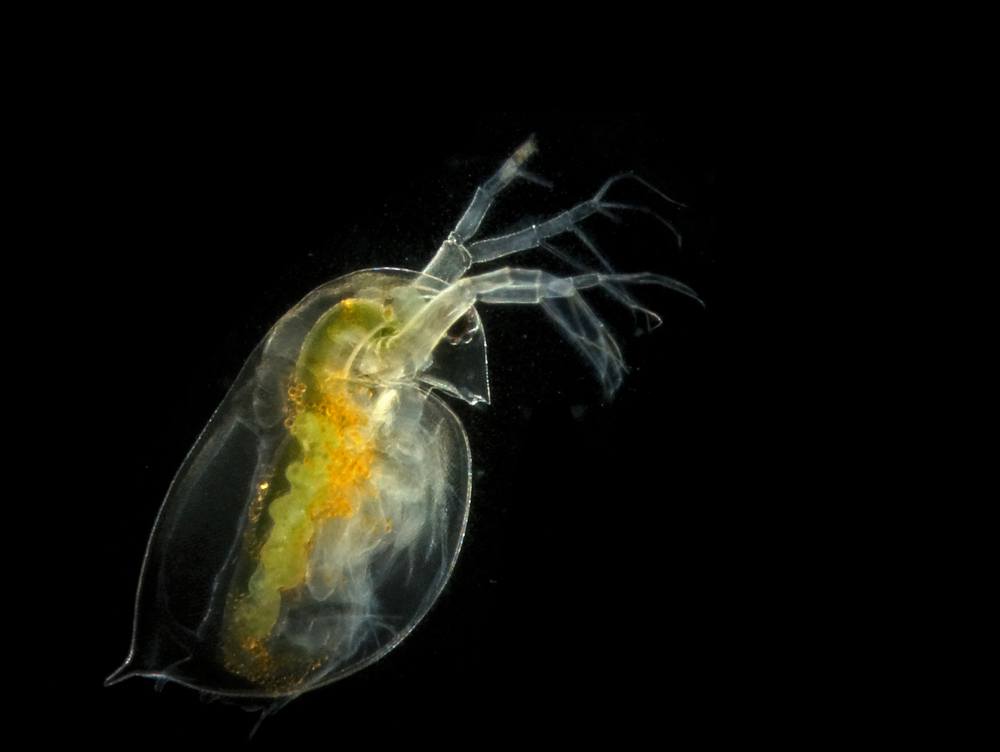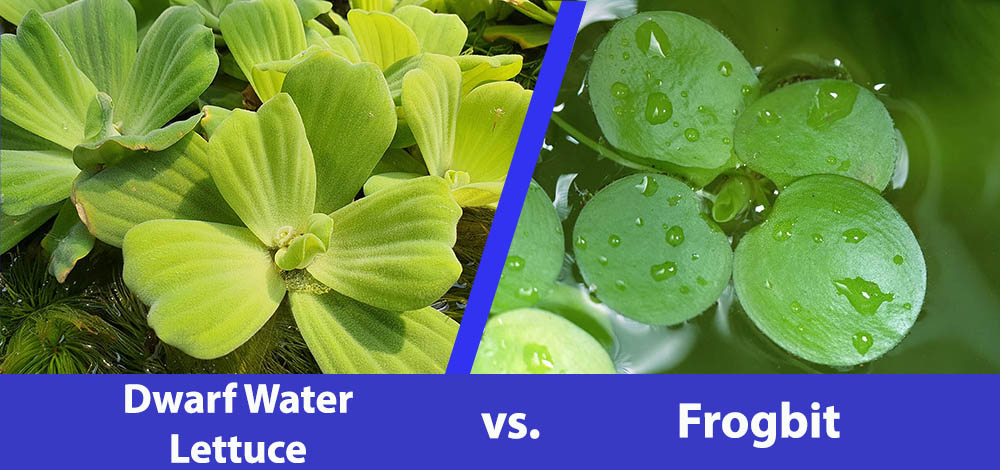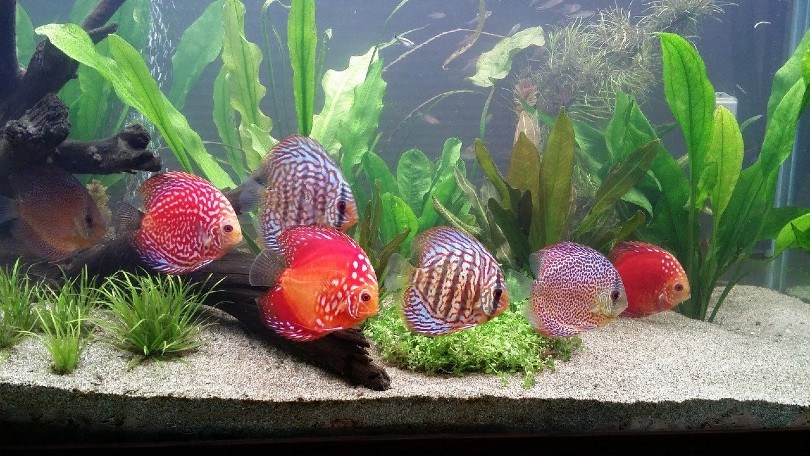7 Tank Mates For Apistogramma Dwarf Cichlids: Compatibility Guide

Updated on
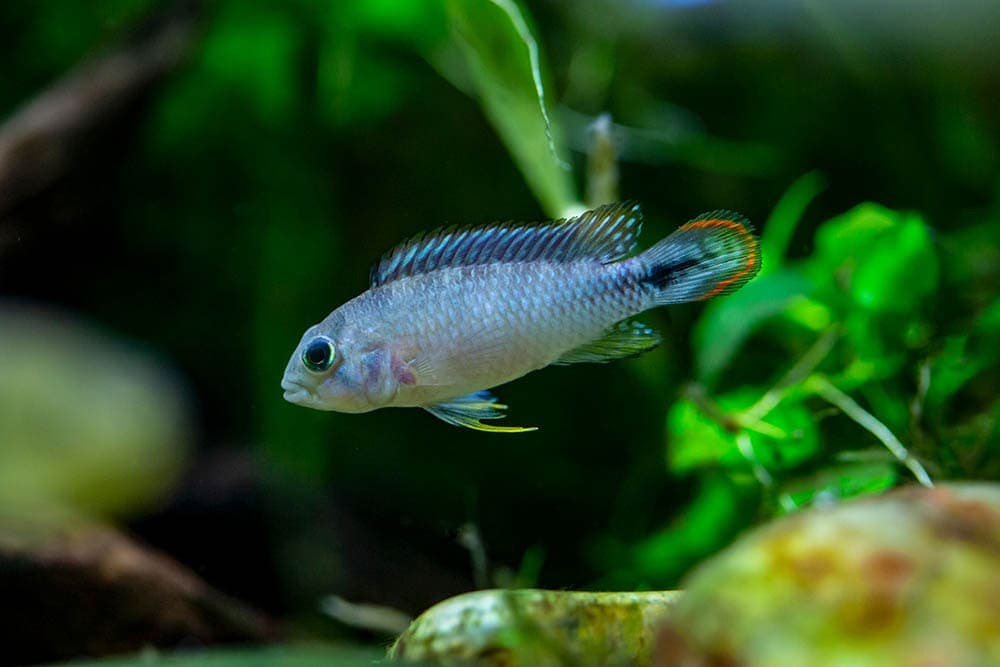
The Apistogramma, or the Dwarf Cichlid, is a small, brightly colored fish that can make a great addition to your fish tank. However, not all fish make great Apistogramma tank mates. In this article, we will discuss which fish make the best tankmates for your Apistogramma and dive into what to look for in an Apistogramma tankmate.
Top 7 Tank Mates for Apistogramma Dwarf Cichlids
1. Rasboras
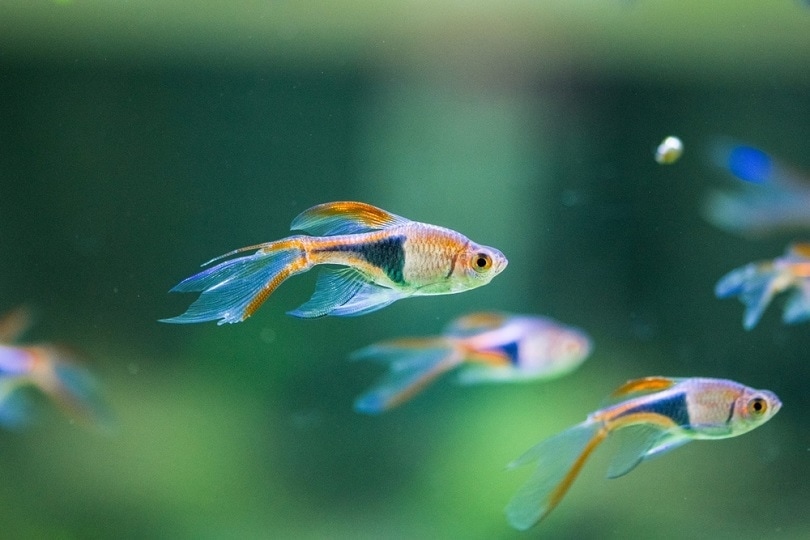
| Size: | 4 inches |
| Diet: | Omnivore |
| Minimum Tank Size: | 10 gallons |
| Care Level: | Intermediate |
| Temperament: | Peaceful |
Rasboras are natives of Southeast Asia that grow to be no more than 4 inches long. Not only are they peaceful fish, but like the Apistogramma, they are also quite colorful fish, making them a great addition to your community tank. They make good companions for the Apistogramma because they are very similar in size, which means the Apistogramma is unlikely to pick on it.
2. Cardinal Tetras
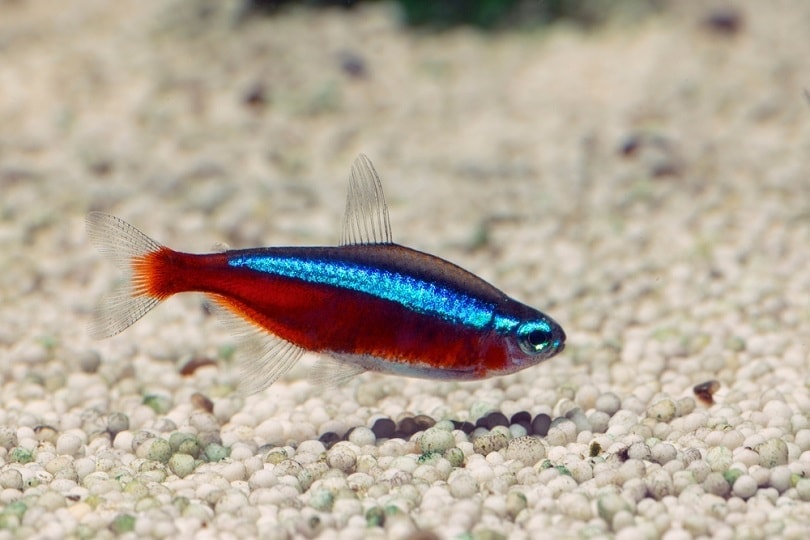
| Size: | 2 inches |
| Diet: | Omnivore |
| Minimum Tank Size: | 20 gallons |
| Care Level: | Intermediate |
| Temperament: | Peaceful |
The Cardinal Tetra is one of the most popular small Tetra breeds out there. They are fairly difficult to breed in captivity, but they are appealing because of their bright blue and red markings. Like the Rasbora, they are schooling fish that thrive in groups of at least six. They should get along well with your Apistogramma because they tend to be top to mid-tank dwellers, leaving the Apistogramma plenty of space on the bottom.
3. Pygmy Cories
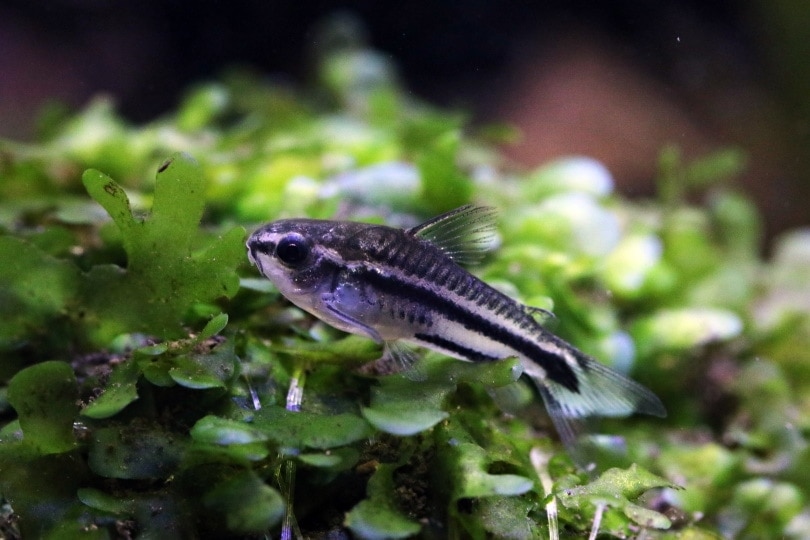
| Size: | 1 inch |
| Diet: | Omnivores |
| Minimum Tank Size: | 10 gallons |
| Care Level: | Easy |
| Temperament: | Peaceful with some playful fighting |
The Pygmy Cory is one of the smallest fish on our list, growing to be just about 1 inch as an adult. Like the other fish on our list, these fish are peaceful schooling fish that should get along just fine with your Apistogramma. One thing to note is that they do tend to spend time on the bottom of the tank, but they will also venture to the middle of the tank and even the top from time to time.
4. Black Skirt Tetras
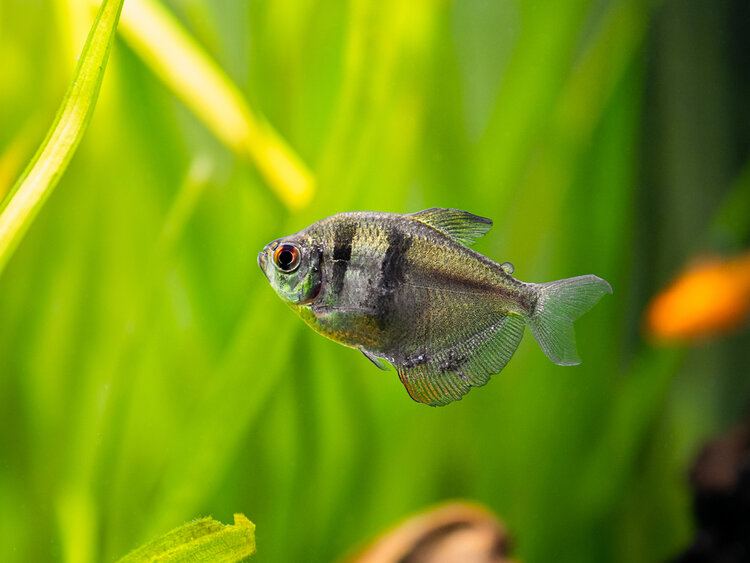
| Size: | 2 inches |
| Diet: | Omnivores |
| Minimum Tank Size: | 10 gallons |
| Care Level: | Easy |
| Temperament: | Social, peaceful |
The Black Skirt Tetra, or Black Widow Tetra, is a small schooling fish that comes in many different colors, despite its name. It is easier to care for than other fish on our list. These fish are social and do well in schools of other fish, but be careful not to pair them with smaller fish as they do sometimes have a tendency to nip. Since the Apistogramma grows to be about an inch bigger than the Black Skirt Tetra, this shouldn’t be an issue for your fish. Additionally, Black Skirt Tetras are mid-dwellers, which means they won’t get in the way of the Apistogramma.
5. Neon Tetras
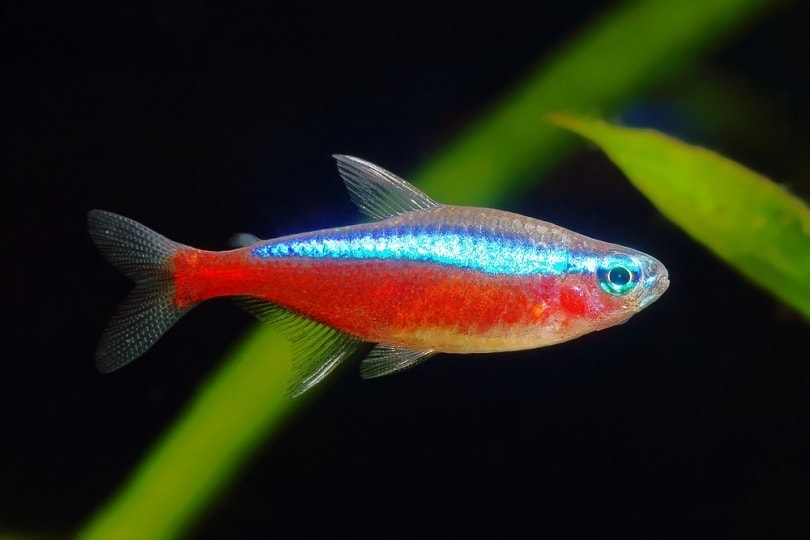
| Size: | 1.5 inches |
| Diet: | Omnivores |
| Minimum Tank Size: | 10 gallons |
| Care Level: | Intermediate |
| Temperament: | Peaceful |
Neon Tetras are extremely popular aquarium fish. They are natives of the Amazon River basins of South America, though very few Neon Tetras in captivity are wild-caught. If you want to add one of these fish to your aquarium, it could be a good choice for a tank that also houses the Apistogramma because it is a mid-dweller, not a bottom-dweller.
6. Dwarf Rainbow Fish
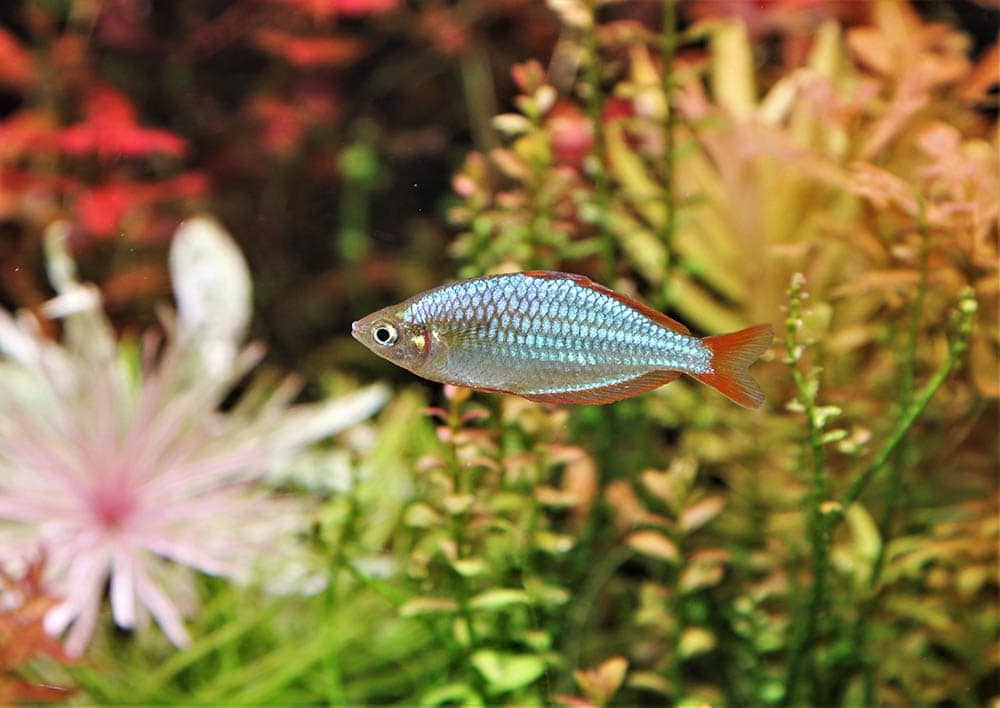
| Size: | 2.5 inches |
| Diet: | Omnivore |
| Minimum Tank Size: | 20 gallons |
| Care Level: | Intermediate |
| Temperament: | Peaceful |
The Dwarf Rainbow Fish are fairly easy to care for, but like the Apistogramma, they can be sensitive to temperature and pH changes in the water. The water should be between 75ºF–82°F and the pH should be about 6.5, making it compatible with the temperature and pH needs of the Apistogramma. These fish hardly ever eat at the bottom of the tank, leaving the Apistogramma plenty of room.
7. Bristlenose Pleco
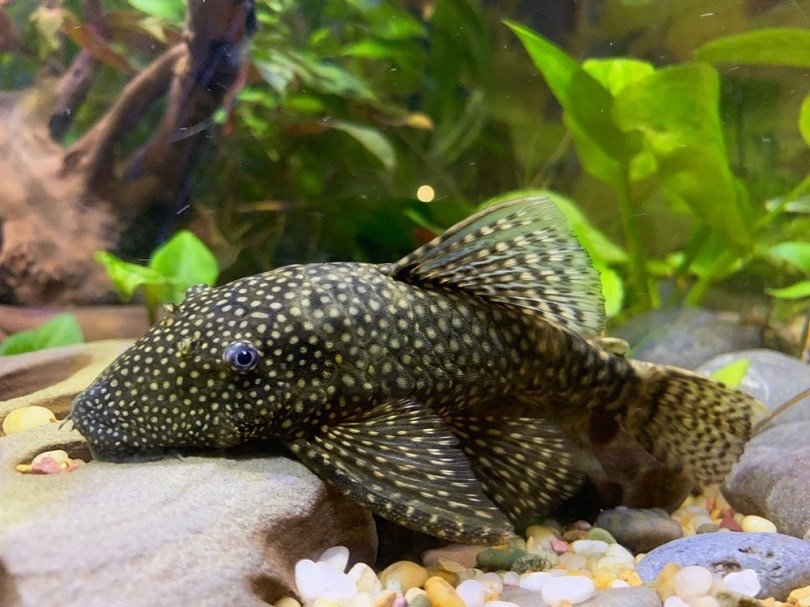
| Size: | up to 5 inches |
| Diet: | Herbivore |
| Minimum Tank Size: | 40 gallons |
| Care Level: | Intermediate |
| Temperament: | Sociable and peaceful |
Bristlenose Plecos are small cousins of the catfish, reaching only about 5 inches long in adulthood. They are primarily vegetarians that tend to eat algae and other vegetation in your fish tank. You should note that as a result, they are bottom dwellers. If you are going to house a Bristlenose Pleco in the same tank as an Apistogramma, the tank needs to be large enough to give both species plenty of room.
What Makes a Good Tank Mate for the Apistogramma?
Since the Apistogramma is a fairly small fish, it is important to pair it with other fish of similar size. If you pair the Apistogramma with a larger fish, you are taking the risk that your Apistogramma will become the larger fish’s prey. You should also make sure to choose a peaceful fish, as the Apistogramma itself can be somewhat aggressive.
Where Do Apistogramma Prefer to Live in the Aquarium?
The Apistogramma is a good fish for a community fish tank, but you need to make sure to pair it with fish that won’t invade its territory. These fish can usually be found dwelling on the bottom of your aquarium, so it will help if you can find a tank mate that does not tend to stick to the bottom.
Water Parameters
It’s important to note that the Apistogramma is fairly sensitive to changes in temperature and pH in the tank water. They are natives of the Amazon basin, where the water is fairly warm, so it’s important to mimic their natural habitat. Keep temperatures between 72ºF and 86°F and pH levels between 6.0 and 7.0 for optimum Apistogramma health.
Size
As mentioned, the Apistogramma is a small fish. Adults typically reach no longer than 3 inches. Interestingly, other members of the cichlid family, such as the African Cichlid or the Wolf Cichlid, can grow quite large and will sometimes outgrow their tanks in captivity. Size is perhaps one of the most important factors when looking for an Apistogramma tank mate.
Aggressive Behaviors
Apistogramma tend to be fairly peaceful fish, but they can sometimes show aggression toward other fish if they do not have enough space to move about. If your fish tank is large enough and you select other non-aggressive fish, aggression in your tank is unlikely to be much of a problem.

Benefits of Having Tank Mates for Apistogramma in Your Aquarium
If you are going to keep just one species, it is recommended that you keep your Apistogramma in pairs or in harems so that they aren’t alone. Avoid keeping more than one Apistogramma male in a tank, as they can be territorial. Like humans, Apistogramma and other fish need companionship to stay happy and healthy. When they are alone, they can become lonely, depressed, and lethargic. When you choose the right companions, other species of fish can also keep your Apistogramma from getting too lonely as well.
Final Thoughts
Housing fish together in your aquarium can help improve the health of your fish by providing them with companions and preventing loneliness. However, you need to be careful about which species you house together, as not all fish are good tankmates.
The Apistogramma tends to be peaceful in comparison to other cichlid species, but it does have a tendency toward aggression from time to time. There are several fish species that could work as tankmates for your Apistogramma, but when in doubt, you can simply choose to keep one mated pair of Apistogramma or a group of females in your tank. No matter which species you choose, your aquarium will be a lively community that will be an interesting focal point to your home!
- You may also like: 4 Best Tank Mates for Shell Dweller Cichlid
Featured Image Credit: boban_nz, Shutterstock



